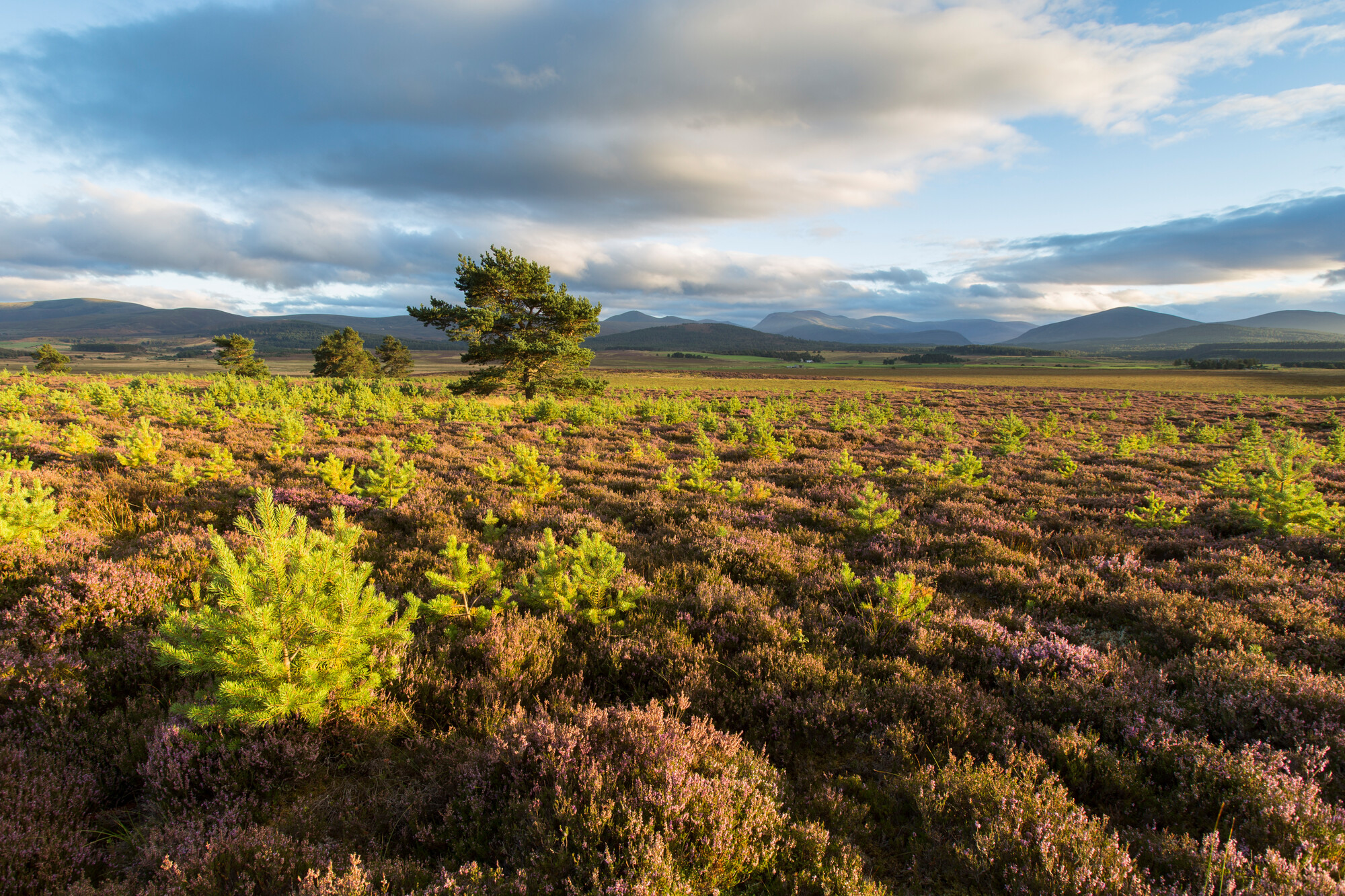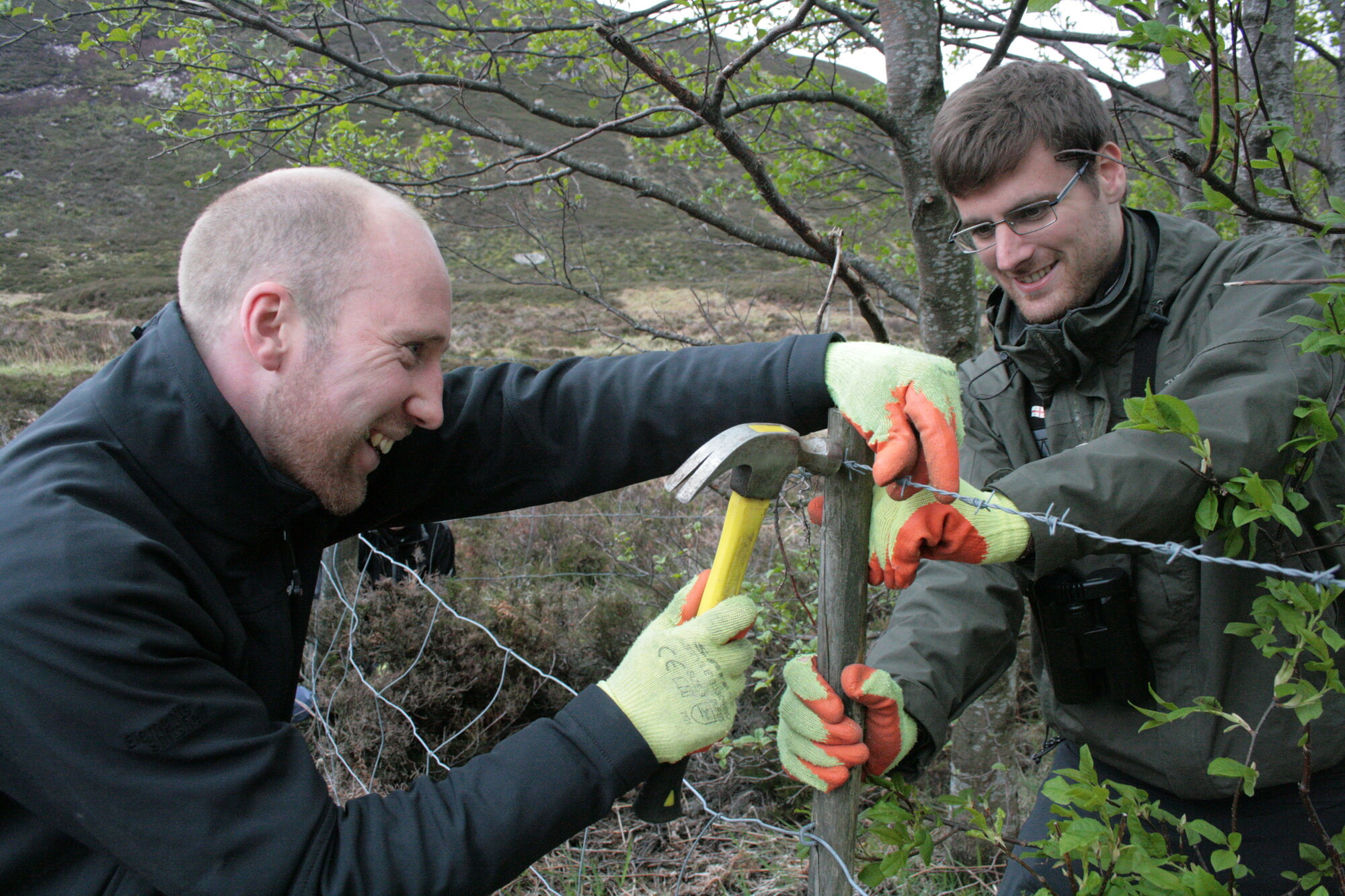Cairngorms National Park STEAM infographic 2023
Cairngorms National Park
STEAM Tourism Economic Impacts 2023 Year in Review Summary
The Visitor Economy of Cairngorms National Park
This is a summary of the annual tourism economic impact research undertaken for the Cairngorms National Park for the calendar years 2012 – 2023. Outputs in this report have been generated using STEAM, the tourism specific economic impact model, owned and operated by Global Tourism Solutions (UK) Ltd.
COVID-19 Pandemic: Some STEAM outputs for 2023 remain below the level of usual economic outputs for the area, due to the residual effects of the COVID-19 pandemic on business and consumer activity. Comparisons have been made to show performance levels against a pre-COVID-19 baselines.
2023
- 2.15 million Tourism Visits to the Cairngorms National Park in 2023
- 4.2 million Visitor Days and Nights generated by Visitors in 2023
- 1.05 million visits were made by visitors staying within the area as part of a holiday or short break, generating 3.1 million nights in local accommodation
- On average, visitors staying in the area spend 2.9 nights in the area and spend a total of £140 million on local accommodation
- 1.1 million tourism visits made by Day Visitors in 2023
- Day Visits to the Cairngorms National Park generated £67.5 million for the local economy in 2023
- A total of £419 million was generated directly and indirectly within the local economy through visitor and tourism business expenditure
- In total, staying visitors generate a total economic impact of £352 million for local businesses and communities
- Visitor activity and spend supports more than 5,454 full time equivalent jobs locally
Trends 2019 – 2023
- Economic Impact +35.9%
- Visitor Numbers +4.0%
- Total Visitor Days and Nights ‑3.3%
2023
Staying Visitors 49% of Visits Day Visitors 51% of Visits
Total Visitor Numbers 2.15m
Visitor Types
Staying Visitors encompass all tourists staying overnight for at least one night in one of the following types of accommodation:
- Serviced Accommodation — including Hotels, Guest Houses, B&Bs, Inns
- Non-Serviced Accommodation – including Self-Catering properties such as Houses, Cottages, Chalets and Flats, as well as Camping and Caravanning, Hostels and University / College accommodation
- Staying with Friends and Relatives (SFR) – unpaid overnight accommodation with local residents
Day Visitors visiting the area on a non-routine and non-regular leisure day trip from a home or holiday base
Visitor Numbers
There were an estimated 2.15m tourism visits to the Cairngorms National Park in 2023, up 24.2% from the previous year, and up 4.0% from estimated pre-covid levels reported in 2019.
In 2023, 1.05m visitors stayed in some sort of accommodation within the area. This sector saw an increase of 17.8% when compared to the previous year and is now 5.3% above pre-covid levels. The serviced accommodation sector, primarily comprised of hotels, guest houses and B&Bs, saw an increase of 19.0% over the last year and is now above 2019 pre-covid levels by 14.4%. Serviced accommodation supply has decreased within the Park in the aftermath of covid, but this has failed to damped down the National Park’s recovery in this sector. The non-serviced accommodation sector also continues to recover steadily and is now just ‑8.3% below pre-covid 2019 figures, while up 16.4% on the previous year. Day visitors throughout many locations in the UK are still below pre-covid levels, especially in rural and semi-rural locations, so it is extremely encouraging to see day visitor numbers up 30.9% on 2022, and now up 2.7% on pre-covid estimates in 2019.
Key Figures: Visitor Numbers 2023
| Visitor Numbers | Serviced | Non-Serviced | SFR | All Staying Visitors | Day Visitors | All Visitors | |
|---|---|---|---|---|---|---|---|
| 2023 (Millions) | M | 0.671 | 0.347 | 0.033 | 1.051 | 1.098 | 2.149 |
| 2022 (Millions) | M | 0.564 | 0.298 | 0.030 | 0.892 | 0.839 | 1.731 |
| Change 22⁄23 (%) | % | +19.0 | +16.4 | +9.0 | +17.8 | +30.9 | +24.2 |
| Share of Total (%) | % | 31.2 | 16.1 | 1.5 | 48.9 | 51.1 | 100.0 |
Total Visitor Days 4.17m
Visitor Days
Visitors spent an estimated 4.17m days in the Cairngorms National Park during 2023. Visitor days take into account multiple stays. For example, if a family of five stay three nights, they will not only account for five visitors, but also fifteen visitor days. On average, staying visitors to the Park stay 2.9 days in the area.
Total staying visitors accounted for 3.1m visitor days in 2023, an increase of 4.7% on the previous year, and now only ‑5.2% below 2019 pre-covid levels. The serviced accommodation sector decreased slightly by ‑3.0% compared to 2022, and is now just fractionally ‑1.6% below pre-covid figures reported in 2019. Meanwhile the much larger non-serviced accommodation sector within the Park is up 8.6% on the previous year, but still down ‑7.3% on 2019, which points to the serviced sector recovering slightly ahead of the non-serviced sector. As mentioned before, day visitors to the Park are not only substantially up by 30.9% on the previous year, but they buck the overall slower recovery trend seen in other rural and semi-rural areas in the UK by now surpassing estimated pre-covid level by 2.7%.
Key Figures: Visitor Days 2023
| Visitor Days | Serviced | Non-Serviced | SFR | All Staying Visitors | Day Visitors | All Visitors | |
|---|---|---|---|---|---|---|---|
| 2023 (Millions) | M | 0.960 | 1.963 | 0.147 | 3.070 | 1.098 | 4.169 |
| 2022 (Millions) | M | 0.989 | 1.808 | 0.136 | 2.933 | 0.839 | 3.772 |
| Change 22⁄23 (%) | % | -3.0 | +8.6 | +8.4 | +4.7 | +30.9 | +10.5 |
| Share of Total (%) | % | 23.0 | 47.1 | 3.5 | 73.7 | 26.3 | 100.0 |
Average Length of Stay for Different Visitor Types: 2023
Day Visitors 1.0 All Visitors 1.9 Serviced Accommodation 1.4 Staying with Friends/Relatives 4.5 All Staying Visitors 2.9 Non-Serviced Accommodation 5.7
Total Economic Impact £419m
Economic Impact
The value of tourism activity in the Caringorms National Park was estimated to be £419m in 2023, up by 18.7% on the previous year, and up by 35.9% when compared to pre-covid levels.
The total direct economic impact comprises the expenditure of visitors on goods and services, totalling £338m. Further to this, indirect and induced economic effects of local businesses and residents spending tourism revenues locally, were estimated to account for a further £81, together totalling £419m. The largest visitor spending sector was Accommodation (£140m), then Transport (£66.63m), followed extremely closely by Food & Drink (£66.58m) and then shopping (£38.5m). The economic impact of the serviced sector was up 11.3% on the previous year, reflecting increases in visitor numbers, and is now 52.9% up on estimated 2019 pre-covid levels. The Park’s larger non-serviced accommodation sector, comprising self-catering and some caravan, camping and touring sites, was up by 20.6% on 2022, and since 2019 has increased by 13%. In terms of comparison, the non-serviced sector has over three times the bedspaces of the serviced sector, but less than half the economic impact. Day visitor economic impact to the Park is up 48.1% on the previous year, and is now 31.5% above 2019 pre-covid levels.
Accommodation: Payments for overnight stays in accommodation, such as room rates, pitch fees and hire charges for non-serviced accommodation Recreation: Covering expenditure on a wide range of leisure activities such as museum, event, concert / theatre and attractions attendance as well as sports participation and spectating. Transport: Expenditure within the destination on travel, including fuel and public transport tickets Food and Drink: Spend on eating and drinking at restaurants, cafes and other venues, takeaway food, snacks and groceries Shopping: What visitors spend on items including clothing / jewellery, household items, music / films / games, gifts and smaller items, books and maps, plants and garden items Indirect: The expenditure by local tourism businesses within the local supply chain
Key Figures: Economic Impact 2023
| Economic Impact | Serviced | Non-Serviced | SFR | All Staying Visitors | Day Visitors | All Visitors | |
|---|---|---|---|---|---|---|---|
| 2023 (£ Millions) | £M | 232.017 | 114.280 | 5.565 | 351.862 | 67.469 | 419.331 |
| 2022 (£ Millions) | £M | 208.550 | 94.778 | 4.505 | 307.833 | 45.547 | 353.380 |
| Change 22⁄23 (%) | % | +11.3 | +20.6 | +23.5 | +14.3 | +48.1 | +18.7 |
| Share of Total (%) | % | 55.3 | 27.3 | 1.3 | 83.9 | 16.1 | 100.0 |
Average Economic Impact Generated by Each Type of Visitor: 2023
| Economic Impact | Serviced | Non-Serviced | SFR | All Staying Visitors | Day Visitors | All Visitors | |
|---|---|---|---|---|---|---|---|
| Economic Impact per Day | £ | 241.73 | 58.20 | 37.79 | 114.60 | 61.42 | 100.58 |
| Economic Impact per Visit | £ | 345.71 | 329.36 | 169.32 | 334.80 | 61.42 | 195.09 |
Seasonal Distribution of Key Visitor Metrics: 2023
- Visitor Numbers: 15.4% Jan-Mar, 28.5% Apr-Jun, 38.7% Jul-Sep, 17.4% Oct-Dec
- Visitor Days: 18.1% Jan-Mar, 28.4% Apr-Jun, 35.4% Jul-Sep, 18.1% Oct-Dec
- Economic Impact: 19.8% Jan-Mar, 24.0% Apr-Jun, 36.8% Jul-Sep, 19.4% Oct-Dec
Total FTES Supported 5,454
Employment Supported by Tourism
The expenditure and activity of visitors to the Cairngorms National Park supported a total of 5,454 Full-Time Equivalent jobs (FTEs) in 2023; an increase of 2.4% on the year before, and now just ‑8.2% below 2019 pre-covid levels.
Total employment includes the jobs generated by the expenditure of visitors on goods and services, totalling 4,484 FTEs, and the indirect and induced employment supported through local businesses and residents spending tourism revenues locally, accounting for a further 970 FTEs. The accommodation sector is by far the largest employment sector supported by tourism activity, accounting for an estimated 2,149 FTEs, followed by Food & Drink at 832 FTEs, and then Transport at 716 FTEs.
Employment Supported by Tourism: Full-Time Equivalents (FTEs) by Type 2023
| Employment Supported by Sector 2023 | Direct Visitor Employment | Indirect and Induced | Total |
|---|---|---|---|
| Accommodation | 2,149 | 970 | 5,454 |
| Food & Drink | 832 | ||
| Recreation | 323 | ||
| Shopping | 464 | ||
| Transport | 716 | ||
| Total Direct | 4,484 |
STEAM Comparative Headlines: 2022 and 2023
| KEY | Staying in Paid Accommodation | Staying with Friends and Relatives (SFR) | All Staying Visitors | Day Visitors | All Visitor Types | ||||||||
|---|---|---|---|---|---|---|---|---|---|---|---|---|---|
| Serviced | Non-Serviced | ||||||||||||
| An increase of 3% or more | |||||||||||||
| Less than 3% change | |||||||||||||
| A Fall of 3% or more | |||||||||||||
| Visitor Days M | 2023 0.960 | 2022 ‑3.0% | 2023 1.963 | 2022 8.6% | 2023 0.147 | 2022 8.4% | 2023 3.070 | 2022 4.7% | 2023 1.098 | 2022 30.9% | 2023 4.169 | 2022 10.5% | |
| Visitor Numbers M | 2023 0.671 | 2022 19.0% | 2023 0.347 | 2022 16.4% | 2023 0.033 | 2022 9.0% | 2023 1.051 | 2022 17.8% | 2023 1.098 | 2022 30.9% | 2023 2.149 | 2022 24.2% | |
| Economic Impact £M | 2023 232.02 | 2022 11.3% | 2023 114.28 | 2022 20.6% | 2023 5.565 | 2022 23.5% | 2023 351.86 | 2022 14.3% | 2023 67.47 | 2022 48.1% | 2023 419.33 | 2022 18.7% | |
| Direct Employment FTEs | 2023 2,158 | 2022 ‑2.9% | 2023 1,629 | 2022 ‑0.3% | 2023 53 | 2022 8.9% | 2023 3,840 | 2022 ‑1.7% | 2023 645 | 2022 30.6% | 2023 4,484 | 2022 1.9% | |
| Total Employment FTEs | 2023 | 2022 | 2023 | 2022 | 2023 | 2022 | 2023 | 2022 | 2023 | 2022 | 2023 | 2022 |
STEAM Comparative Headlines: 2019 and 2023 Covid Recovery (Unindexed)
| KEY | Staying in Paid Accommodation | Staying with Friends and Relatives (SFR) | All Staying Visitors | Day Visitors | All Visitor Types | ||||||||
|---|---|---|---|---|---|---|---|---|---|---|---|---|---|
| Serviced | Non-Serviced | ||||||||||||
| An increase of 3% or more | |||||||||||||
| Less than 3% change | |||||||||||||
| A Fall of 3% or more | |||||||||||||
| Visitor Days M | 2023 0.960 | 2019 ‑1.6% | 2023 1.963 | 2019 ‑7.3% | 2023 0.147 | 2019 0.4% | 2023 3.070 | 2019 ‑5.2% | 2023 1.098 | 2019 2.7% | 2023 4.169 | 2019 ‑3.3% | |
| Visitor Numbers M | 2023 0.671 | 2019 14.4% | 2023 0.347 | 2019 ‑8.3% | 2023 0.033 | 2019 1.5% | 2023 1.051 | 2019 5.3% | 2023 1.098 | 2019 2.7% | 2023 2.149 | 2019 4.0% | |
| Impact Economic Impact £M | 2023 232.02 | 2019 52.9% | 2023 114.28 | 2019 13.0% | 2023 5.565 | 2019 28.8% | 2023 351.86 | 2019 36.8% | 2023 67.47 | 2019 31.5% | 2023 419.33 | 2019 35.9% | |
| Direct Employment FTEs | 2023 2,158 | 2019 ‑14.7% | 2023 1,629 | 2019 ‑11.4% | 2023 53 | 2019 1.2% | 2023 3,840 | 2019 ‑13.2% | 2023 645 | 2019 3.3% | 2023 4,484 | 2019 ‑11.1% | |
| Total Employment FTEs | 2023 | 2019 | 2023 | 2019 | 2023 | 2019 | 2023 | 2019 | 2023 | 2019 | 2023 | 2019 |




